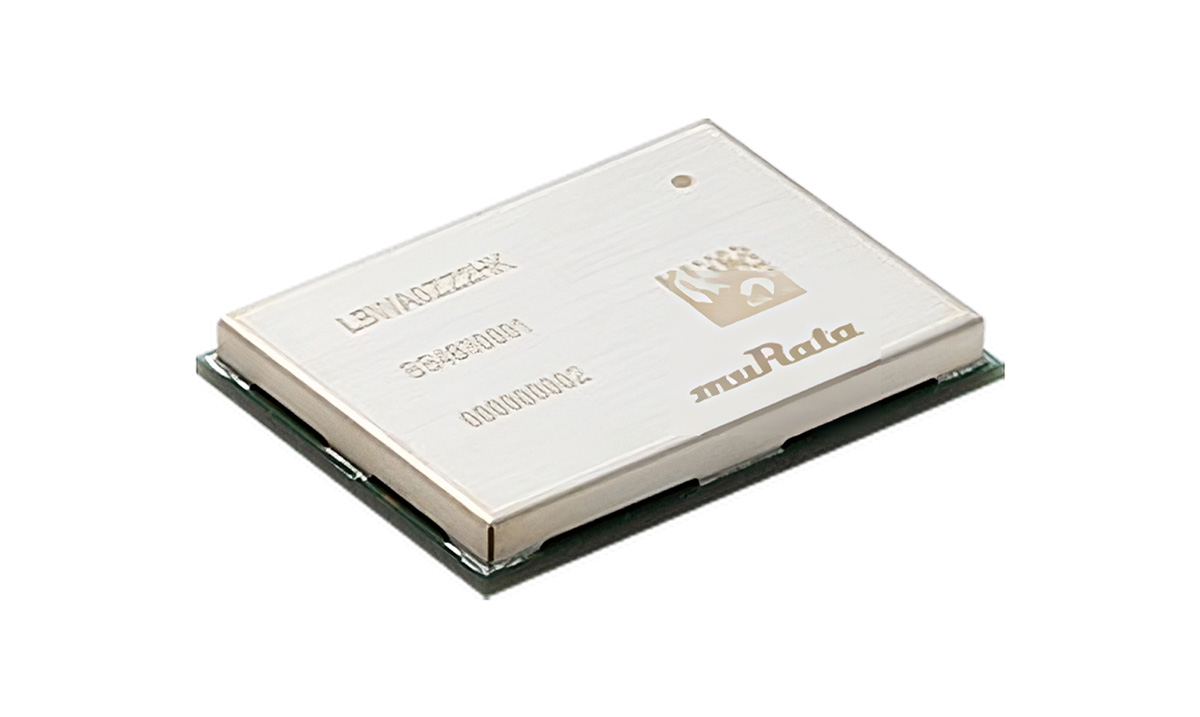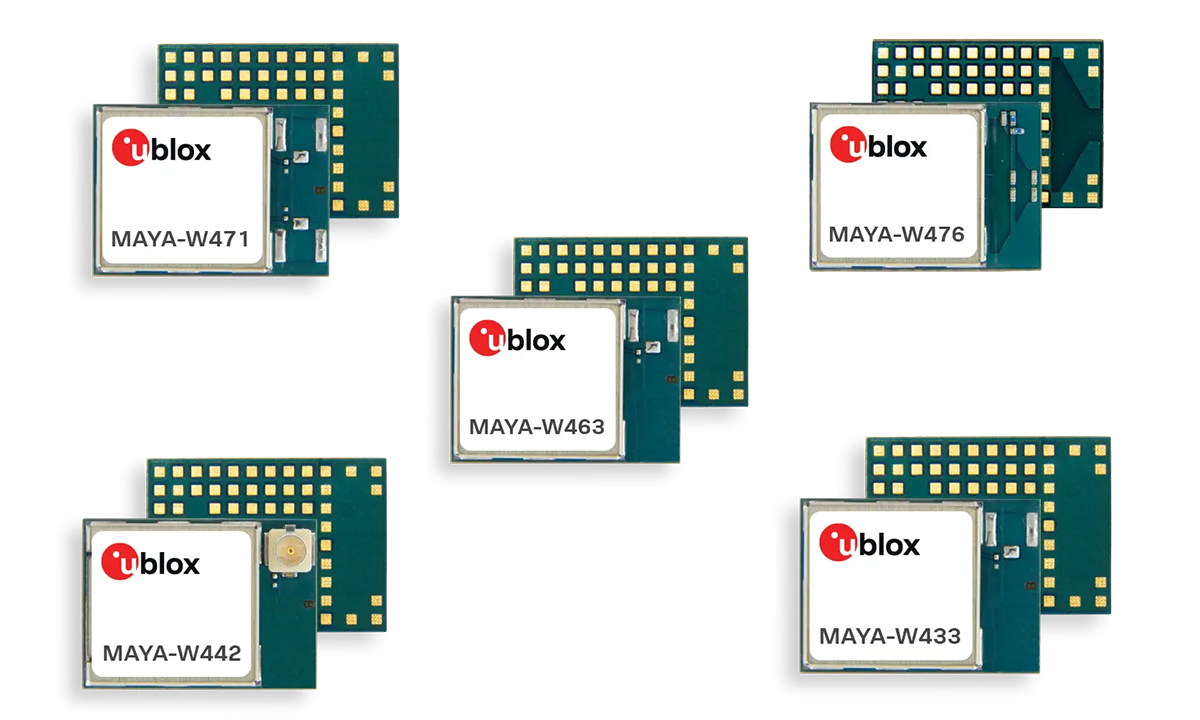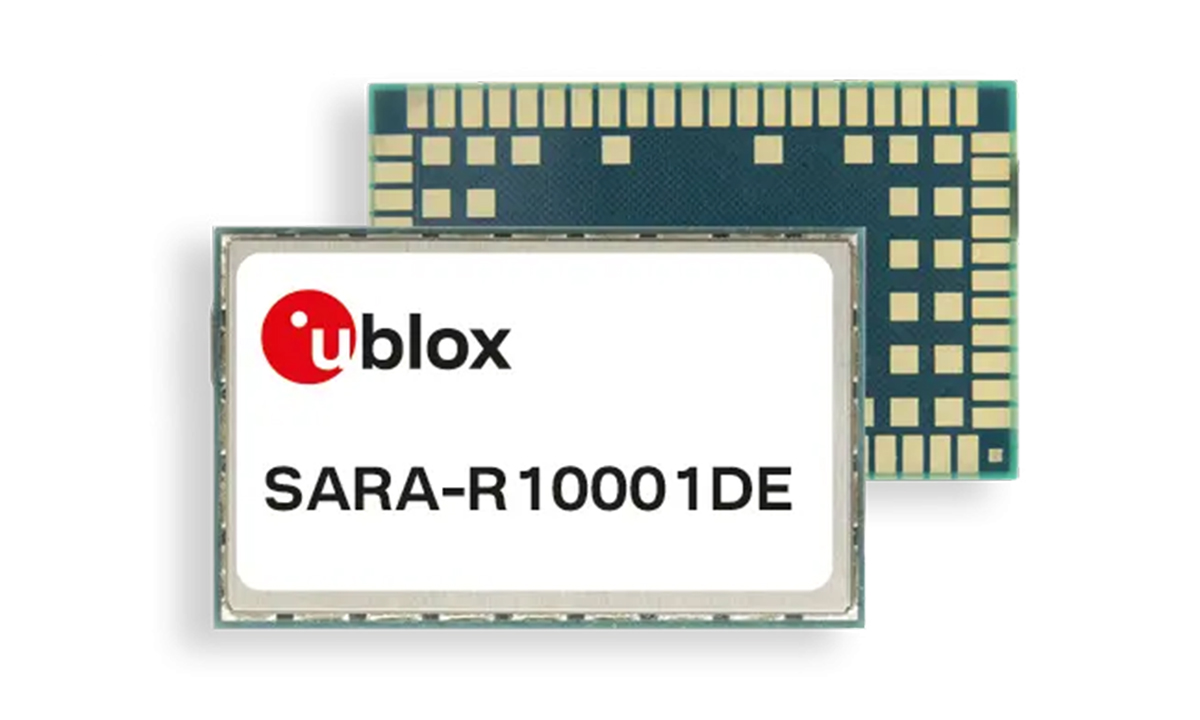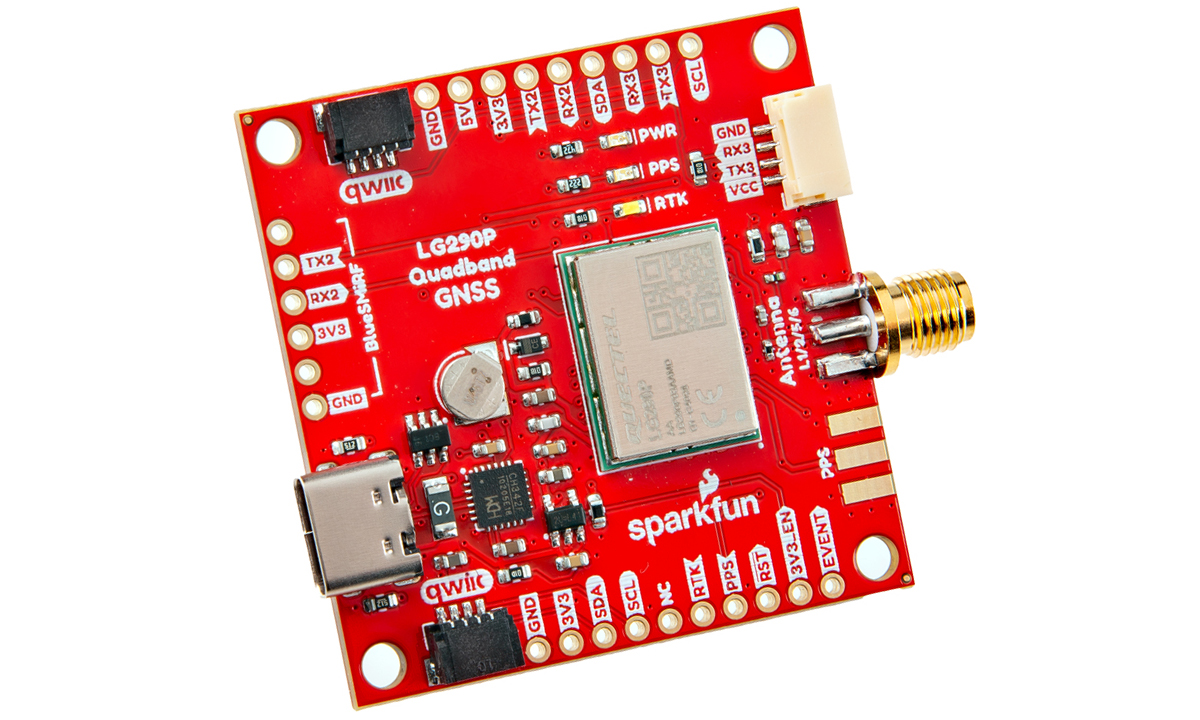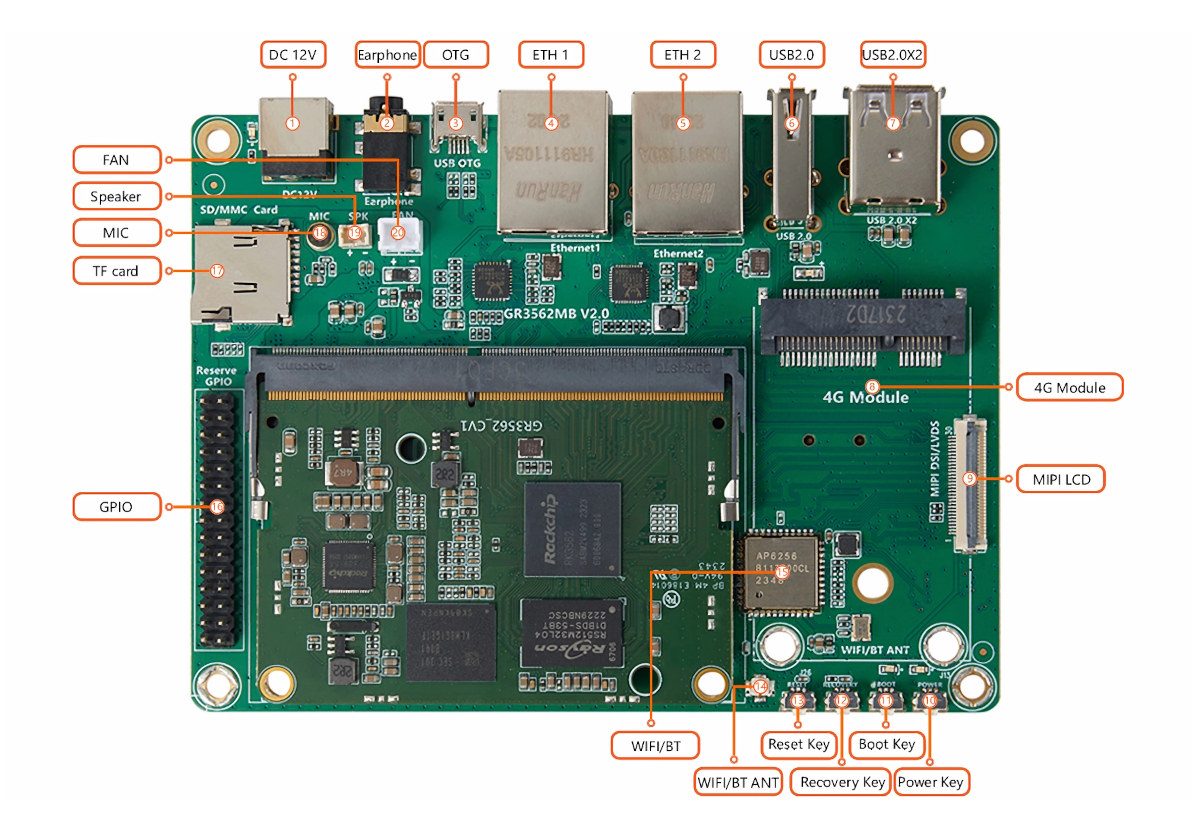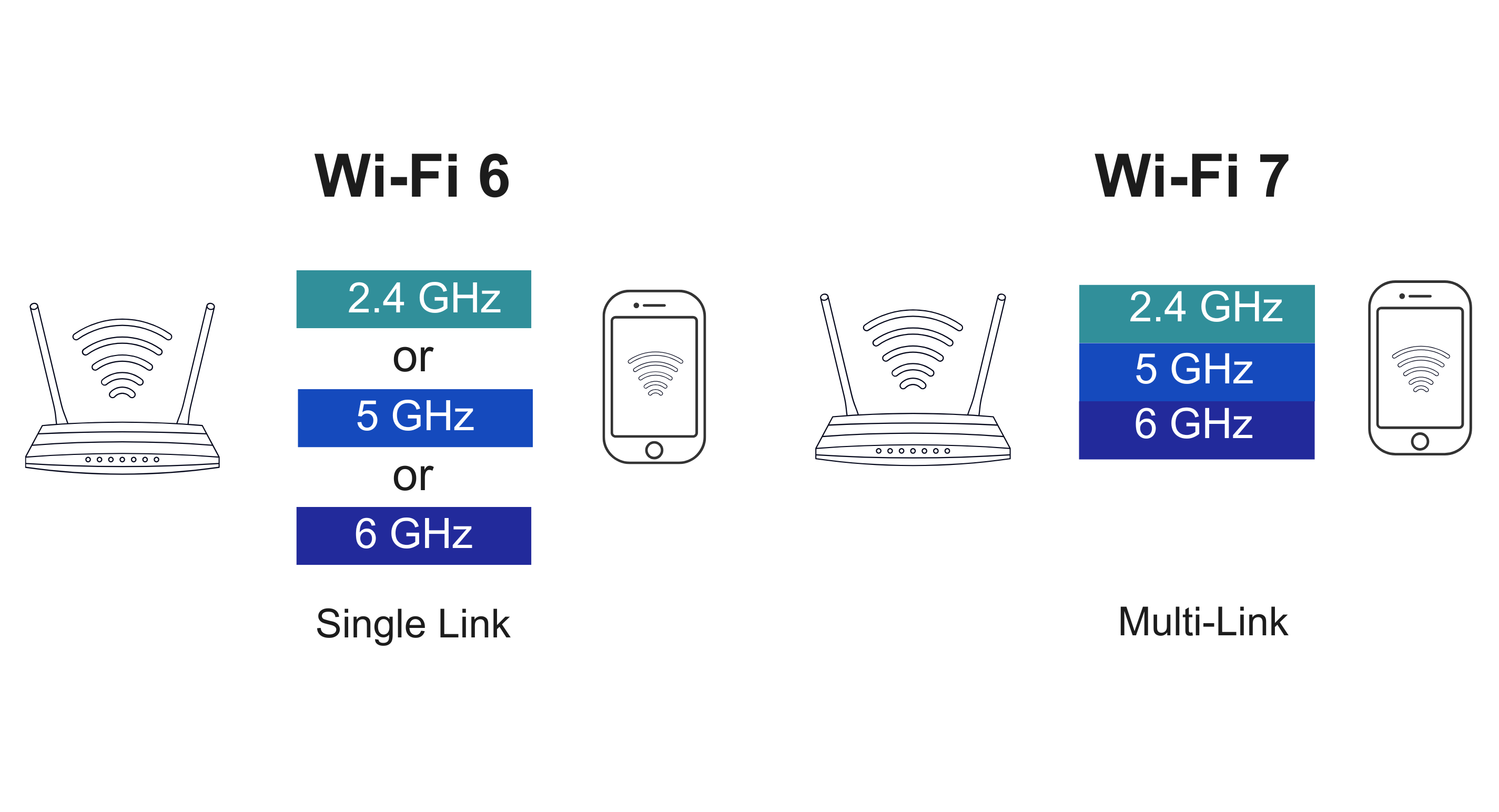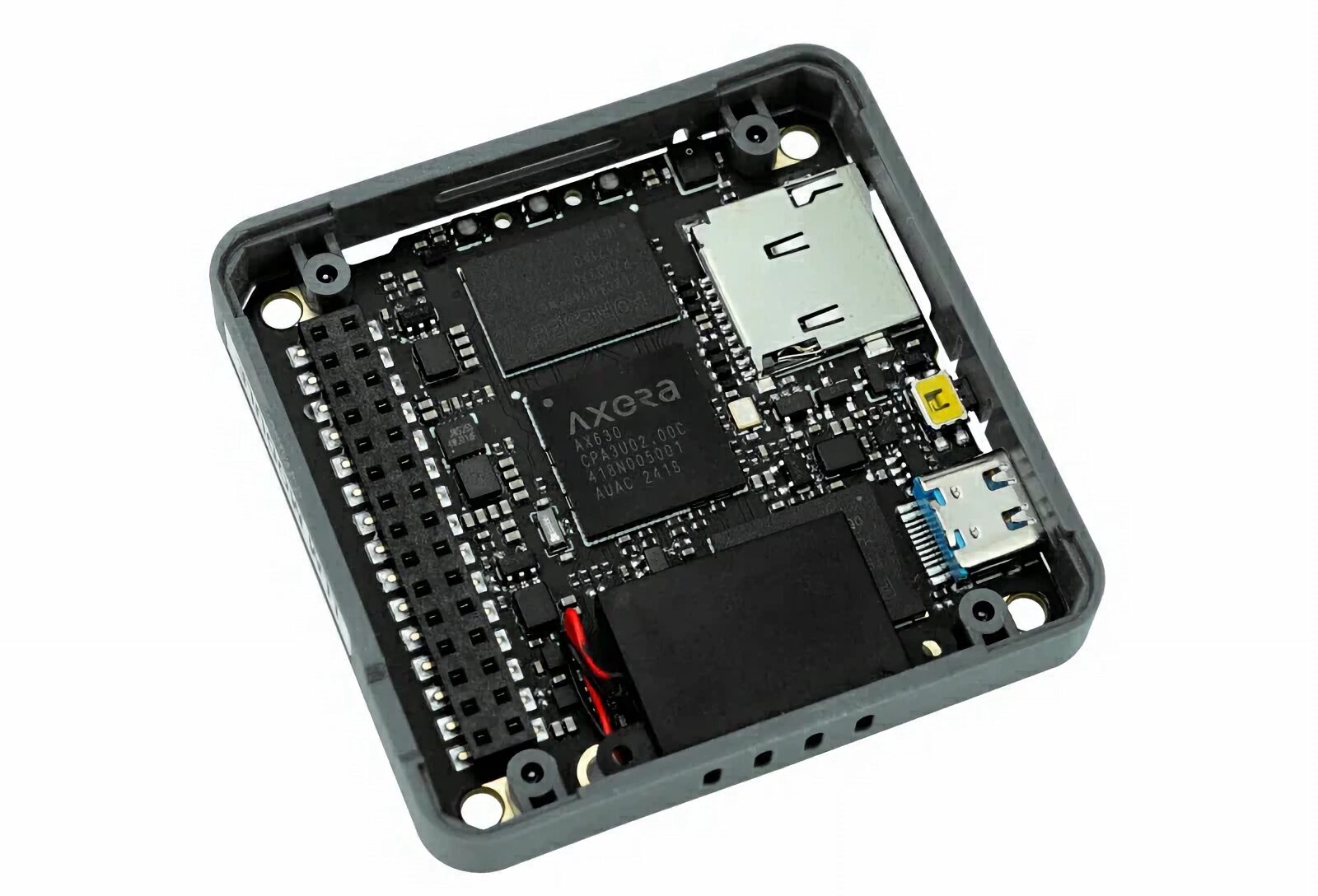Murata has recently introduced two new ultra-low power, sub-1 GHz Wi-Fi HaLow modules (LBWA0ZZ2HK and LBWA0ZZ2HL) compliant with Sub-1 GHz (S1G) 802.11ah Wi-Fi standard across key regions. The Type 2HK module operates at frequencies from 902MHz to 928MHz and features a communication range of 2km, whereas the low-power Type 2HL operates at 750MHz to 950MHz and can communicate over 1km. According to Murata, these modules can achieve high-speed communication over 1km and are suitable for applications such as smart devices, smart homes, smart accessories, and others. The modules are based on the NEWRACOM NRC7394 chipset built around an Arm Cortex-M3 with enough processing power for handling the Wi-Fi subsystem and user applications. Both modules feature an SPI host interface with peripherals including SPI, 2x UART, 2x I2C, 2-channel 10-bit ADC, and GPIO. Murata LBWA0ZZ2HK and LBWA0ZZ2HL specifications: HaLow SoC – Newracom NRC7394 SoC Frequency 2HL – Sub-1 GHz (750-950 MHz) […]
u-blox MAYA-W4 tri-radio IoT module features NXP IW610 chipset with Wi-Fi 6, Bluetooth 5.4, and 802.15.4 radios
Last year, we covered the u-blox MAYA-W3 module, which was based on the Infineon AIROC CYW5551x chipset and utilized separate chipsets for 2.4 GHz, 5 GHz, and 6 GHz frequencies. Now, u-blox has introduced the MAYA-W4 series, a host-based Wi-Fi 6, Bluetooth 5.4, and 802.15.4 module built on the NXP IW610 chipset. Designed for industrial and commercial applications such as building automation, energy management, smart homes, and healthcare, the MAYA-W4 series supports SISO Wi-Fi 6 with a 20 MHz channel width, ensuring reliable performance in dense network environments. These modules can function as access points, stations, P2P devices, or in mixed modes. The MAYA-W4 modules are compatible with the Matter protocol over Thread and Wi-Fi, facilitating seamless integration across ecosystems. With a compact size of 10.4 x 14.3 mm, these modules rank among the smallest Wi-Fi 6 SMD modules and are available with integrated antennas or U.FL connectors. Rigorous testing […]
Silicon Labs SiWG917Y and SiWN917Y are ultra-low power WiFi 6 and Bluetooth LE 5.4 IoT modules
Silicon Labs SiWG917Y and SiWN917Y are pre-certified, ultra-low power 2.4 GHz WiFi 6 and Bluetooth Low Energy (LE) 5.4 modules made as an extension of the Wireless Gecko Series 2 Arm Cortex-M33 microcontroller family and designed for IoT applications such as Smart Home devices, building automation solutions, healthcare devices, industrial sensors, and asset trackers. The SiWG917Y module is used as a standalone solution where all application code runs on an Arm Cortex-M4 core, and the SiWN917Y module is designed as a Network Co-processor so customers can execute their application on a separate MCU while the wireless module manages WiFi 6 and BLE 5.4. Silicon Labs SiWx917Y modules specifications: Microcontroller MCU Arm Cortex-M4F application core up to 180 MHz (225 DMIPS performance) Arm Cortex-M4 network wireless processor running up to 160 MHz, Accelerators – Integrated FPU, MPU, NVIC, Matrix vector processor (MVP) Memory 672 KB embedded SRAM shared by Cortex-M4 and […]
u-blox SARA-R10001DE LTE Cat 1bis Module integrates an eSIM with Multi-IMSI and eUICC support
u-blox has introduced the SARA-R10001DE, an LTE Cat 1bis module with integrated eSIM featuring multi-IMSI technology and eUICC functionality. The module is pre-provisioned with Wireless Logic’s Conexa IoT Network SIM profiles for global IoT deployments. The eSIM supports OTA using Remote SIM Provisioning, allowing the module to switch between multiple stored SIM profiles to connect to the best available network. Multi-IMSI technology allows eSIMs to store multiple International Mobile Subscriber Identity (IMSI) profiles, enabling dynamic network switching for uninterrupted connectivity. eUICC functionality, based on the GSMA standard, facilitates OTA updates and profile management, simplifying operator switching and ensuring global compliance. Although SARA-R10001DE is u-blox’s first LTE Cat 1bis module with an embedded SIM (eSIM), we previously covered the u-blox LEXI-R10 LTE Cat 1bis module and associated evaluation kit, as well as Cavli C17QS Cat 1bis module built around the Qualcomm QCX217 microcontroller. u-blox SARA-R10001DE module specifications: LTE module – SARA-R10001DE […]
SparkFun introduces Quadband GNSS RTK Breakout board with Quectel LG290P module for high-precision navigation
SparkFun has released the Quadband GNSS RTK Breakout featuring the Quectel LG290P module designed for high-precision real-time kinematic (RTK) applications. It supports GPS, GLONASS, Galileo, BDS, QZSS, and NavIC constellations, with the ability to simultaneously receive signals from L1, L2, L5, and L6/E6 frequency bands. The module includes support for SBAS augmentation systems (e.g., WAAS, EGNOS, GAGAN) and PPP services (e.g., BDS PPP-B2b, QZSS CLAS), delivering reliable positioning with fast convergence times for precision navigation tasks. The breakout board offers a compact design (43.2 x 43.2mm) and multiple expansion options including 24 PTH pins, dual 4-pin JST Qwiic connectors, three UART interfaces, a USB-C connector, and additional PTH pins for BlueSMiRF/Serial-to-UART. With its RTK support and advanced GNSS capabilities, the board is ideal for applications requiring high-accuracy positioning and robust navigation performance. Previously, we covered several GNSS boards including the SparkFun GNSS L1/L5, u-blox EVK-LEXI-R10, and Conexio Stratus Pro and […]
Graperain G3562 – A Rockchip RK3562 system-on-module and development board
Graperain G3562 is a Rockchip RK3562 quad-core Cortex-A53 system-on-module (SoM) with up to 8GB LPDDR4, up to 128GB eMMC flash suitable for Edge AI, IoT, automation, and consumer electronic applications. The company also provides the G3562 development board for the SoM with an M.2 socket for NVMe SSD, dual Ethernet, WiFi 5 and Bluetooth 5.0, and optional 4G LTE/3G cellular connectivity, plus a MIPI DSI/LVDS display connector, two MIPI CSI camera connectors, three USB 2.0 ports, audio interfaces, and expansion through a 30-pin GPIO header and UART connector. Graperain G3562 SoM GrapeRain G3562 specifications: SoC – Rockchip RK3562 CPU – Quad-core Arm Cortex-A53 quad-core @ 2.0 GHz GPU – Mali-G52-2EE with support for OpenGL ES 1.1/2.0/3.2, OpenCL 2.0, Vulkan 1.0/1.1 AI accelerator – 1 TOPS (INT8) NPU VPU Encoder – H.264 1920×1080 @ 60fps Decoder – H.265/VP9 4096×2304 @ 30fps; H.264 1920×1080 @ 60fps RAM – 2GB LPDDR4 by default […]
Compex Systems Unveils Wi-Fi 7 Modules with Smart Connectors, Enabling Seamless Multi-Link Operation (MLO) Integration on Conventional CPU Platforms (Sponsored)
Compex Systems (Compex), a global leader in wireless communication technology, is taking Wi-Fi 7 to new heights with an innovative connector design for Multi-Link Operation (MLO). This breakthrough enables seamless deployment of MLO across off-the-shelf platforms, including those with Intel x86 and ARM processors (e.g. NXP and Marvell), eliminating the need for custom-made host boards and unlocking the full potential of Wi-Fi 7 features for a wider range of users and applications. Multi-Link Operation (MLO) is a key performance advantage of Wi-Fi 7 (802.11be), setting it apart by allowing the routing and aggregation of throughput across multiple radio links in different frequency bands. It enables data to be routed through the least congested links, improving overall latency and reliability. MLO can also aggregate bandwidths from more than one wireless link, enhancing throughput and network performance. It is ideal for bandwidth-intensive and real-time applications such as 4K/8K video streaming, cloud gaming, […]
M5Stack releases AX630C-powered offline “Module LLM” for local smart home and AI applications
The M5Stack Module LLM is yet another box-shaped device from the company that provides artificially intelligent control without internet access. It is described as an “integrated offline Large Language Model (LLM) inference module” which can be used to implement local LLM-based solutions in smart homes, voice assistants, and industrial control. Module LLM is powered by the AX630C SoC, equipped with 4GB LPDDR4 memory, 32GB storage, and a 3.2 TOPS (INT8) or 12.8 TOPS (INT4) NPU. M5Stack says the main chip has an average runtime power consumption of 1.5W, making it suitable for long-term operation. It has a built-in microphone, speaker, microSD card slot, and USB OTG. The USB port can connect peripherals such as cameras and debuggers, and the microSD card slot supports cold and hot firmware updates. The M5Stack Module LLM joins the list of other offline, on-device LLM-based solutions, such as the SenseCAP Watcher, Useful Sensors’ AI in […]


